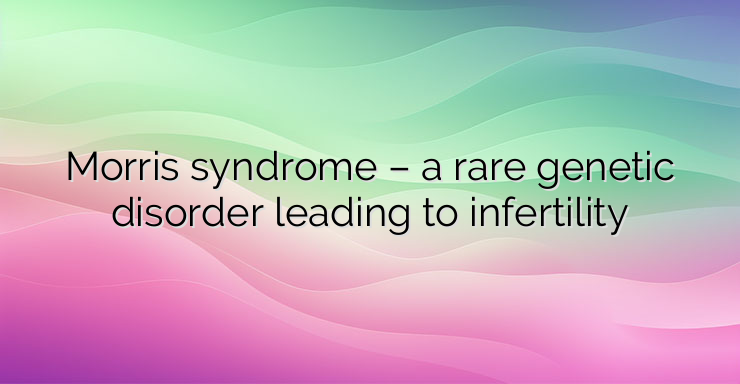Morris syndrome, also known as androgen insensitivity syndrome, is a rare inherited disorder of sexual development. People suffering from the disease are genetically with a male chromosome set, but do not develop male genitalia. This is because their bodies do not respond to male sex hormones. Androgen insensitivity syndrome can cause problems during puberty as well as infertility. Morris syndrome is a sex differentiation disorder. In the past it was known as testicular feminization syndrome. It affects male fetuses as they develop in utero, as well as sexual development during puberty. The disease prevents male genitalia from developing properly, meaning people with the syndrome have male chromosomes (one X chromosome and one Y chromosome) but may develop external female genitalia. It almost always leads to infertility in adulthood. Three varieties of the disease are known. Syndrome of complete androgen insensitivity. In this case, a person’s external genitalia appear female. But they have no female genitalia (no ovaries, fallopian tubes or uterus). Partial androgen insensitivity syndrome. A person’s external genitalia may look like a partially (incompletely) developed male or female. Mild androgen insensitivity syndrome. A person’s genitalia appear male, but are usually barren. Men who inherit an abnormal gene, called the androgen receptor gene, from their mothers have a 1 in 4 chance of developing the disease. Women can also inherit and carry the gene, but will not develop Morris syndrome. Androgen insensitivity syndrome is rare. About 1 in 99,000 male babies are born with partial androgen insensitivity syndrome and 2 to 5 in 100,000 are born with complete androgen insensitivity syndrome. The disease is the result of an abnormal X-linked gene, meaning it is a gene on the X chromosome and is only passed on from the mother’s DNA. The gene cannot produce androgen receptors. These are cells that allow the body to respond to androgens, such as testosterone. The most common symptom in all forms of androgen insensitivity syndrome is infertility. People suffering from complete androgen insensitivity cannot get pregnant. They have female-looking genitalia, but no female reproductive organs. Other signs and symptoms include: Abnormally tall height for a female during puberty. Amenorrhea. Little or no pubic or underarm hair during puberty. Narrow or shallow vagina. Undescended testicles (testicles that are still in the abdominal cavity). The treatment of the disease depends on the determination of the sex chosen for the baby at birth. Most treatments take place after puberty. This gives the child’s body time to go through developmental changes. But some health experts believe that some types of treatment, such as removal of the testicles,must be performed before puberty. This reduces the risk of gonadoblastomas, which are tumors that can form in undescended testicles. References: 1. National Health Services. Androgen insensitivity syndrome. (https://www.nhs.uk/conditions/androgen-insensitivity-syndrome/) Accessed 12/14/2021. 2. National Organization for Rare Disorders (NORD). Partial Androgen Insensitivity Syndrome. (https://rarediseases.org/rare-diseases/androgen-insensitivity-syndrome-partial/) Accessed 12/14/2021. 3. Singh S, Ilyayeva S. Androgen Insensitivity Syndrome. (https://www.ncbi.nlm.nih.gov/books/NBK542206/) [Updated 2020 June 24]. In: StatPearls [Internet]. Treasure Island (FL): StatPearls Publishing; 2021 Jan-. Accessed 12/14/2021.


Leave a Reply